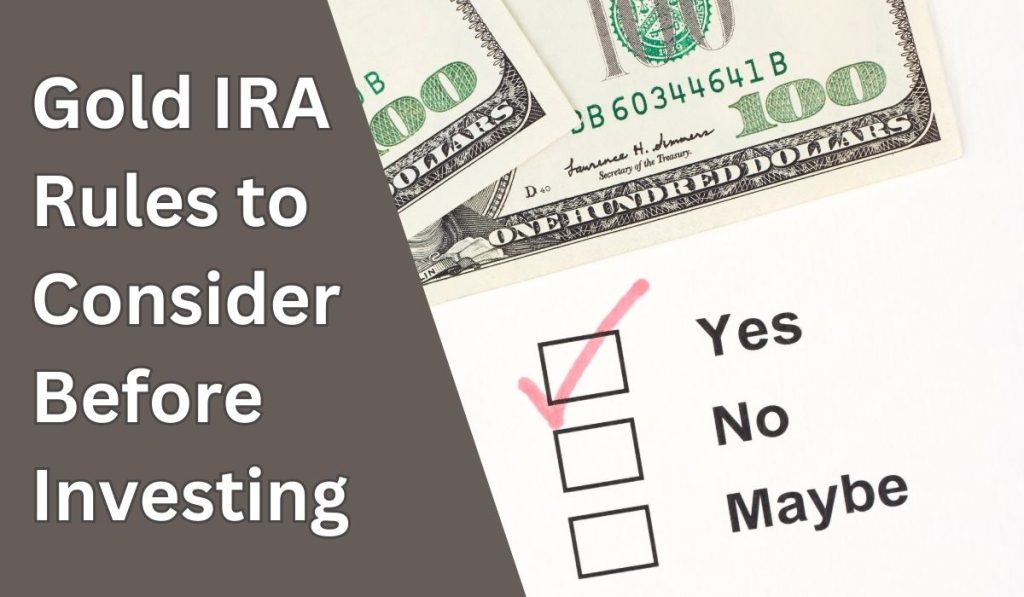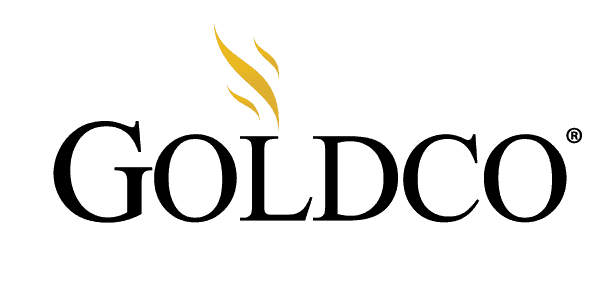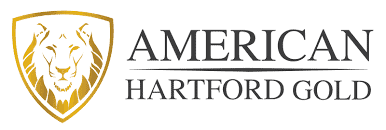Investing in Gold IRA: Expert Insights for Smart Decisions

As an individual looking to secure a stable financial future, I have always found it vital to consider various investment options to diversify my portfolio. One such option that has intrigued me is investing in a Gold IRA. Known for its potential to hedge against inflation and economic uncertainties, a Gold IRA can be an appealing option for retirement planning.
While contemplating the decision to invest in a Gold IRA, I realized that there are several important factors to consider before jumping in. For example, understanding how to set up a self-directed IRA account, being aware of the contribution limits, and knowing the types of gold and precious metals allowed for investment is essential in making a well-informed decision.
Moreover, I recognized that it is crucial to weigh the pros and cons of a Gold IRA, as it often comes with higher fees than traditional IRAs. By thoroughly evaluating these aspects, one can make an educated choice that aligns with personal financial goals and retirement plans.
Understanding Gold IRA
What Is a Gold IRA?
A Gold IRA is a type of Individual Retirement Account that allows investors to own physical gold, silver, platinum, and palladium. This is different from traditional IRAs, which are typically limited to more usual assets like stocks, bonds, and mutual funds. By investing in a Gold IRA, I can diversify my retirement portfolio with precious metals, potentially offering a hedge against market volatility and currency devaluation.
How Does It Work?
Setting up a Gold IRA involves opening a self-directed IRA account with a custodian who offers precious metals IRAs. As an investor, I would choose from a range of IRS-approved precious metal coins or bars to add to my Gold IRA. It is important to note that IRS rules dictate that the precious metals must be stored in an approved depository and cannot be held personally by the investor.
Here are some examples of IRS-approved precious metals for Gold IRAs:
- Gold: American Eagle coins, Canadian Maple Leaf coins, Vienna Philharmonic coins
- Silver: American Eagle coins, Canadian Maple Leaf coins, Australian Kookaburra coins
- Platinum: American Eagle coins, Canadian Maple Leaf coins, Australian Koala coins
- Palladium: Canadian Maple Leaf coins, Russian Ballerina coins, and certain bars that meet specific purity standards
Gold IRA vs Traditional IRA
Before deciding to invest in a Gold IRA, it’s crucial to understand the key differences between a Gold IRA and a Traditional IRA. Some of the main differences include:
- Investment options: While Traditional IRAs focus on stocks, bonds, and mutual funds, Gold IRAs allow investments in physical precious metals like gold, silver, platinum, and palladium.
- Risk diversification: Gold IRAs can provide greater diversification in your retirement portfolio, as precious metals may respond differently to market movements compared to traditional investment assets.
- Tax benefits: Both Gold IRAs and Traditional IRAs offer tax-deferred growth of investments. However, Traditional IRAs may qualify for pre-tax contributions, whereas Gold IRA contributions are made with after-tax dollars.
- Storage requirements: Unlike traditional IRA assets, Gold IRA assets must be stored in an IRS-approved depository, ensuring the safety of the precious metals but also resulting in additional storage fees.
- RMDs and early withdrawal penalties: Both Gold IRAs and Traditional IRAs have required minimum distributions (RMDs) beginning at age 72 and may impose penalties on early withdrawals before age 59½.
It’s important to weigh the advantages and disadvantages of each type of IRA before deciding which one is the best fit for my retirement planning goals.
Factors to Consider Before Investing
Investment Goals
Before investing in a gold IRA, it’s essential for me to understand my investment goals. Gold IRAs are primarily used as a hedge against inflation, currency devaluation, or economic uncertainty. As a long-term investor, I need to weigh the benefits of diversifying my portfolio with gold against the potential growth opportunities in other asset classes.
Risk Tolerance
Another factor I need to consider is my risk tolerance. Gold has a reputation for being a stable investment, but its value can still fluctuate over time. As physical gold and other precious metals are the primary assets in a gold IRA, I should be comfortable with the inherent risks associated with investing in these assets. Some of these risks include storage costs, dealer markups, and the potential for loss if the physical assets are damaged or stolen.
Time Horizon
My investment time horizon is another crucial determinant in whether a gold IRA is suitable for me. Gold IRA investments are better suited for those with a longer time horizon, as they are typically less volatile than some other investments like stocks. Additionally, since gold IRAs have required minimum distribution rules, I need to be mindful of when I’ll need to access my funds. This affects my overall asset allocation and my plans for retirement.
Types of Gold Investments
When considering investing in a Gold IRA, it’s essential to understand the different types of gold investments available. In this section, I will discuss three popular options: Physical Gold, Gold ETFs, and Gold Mining Stocks.
Physical Gold
One option for investing in a Gold IRA is purchasing physical gold bullion, such as gold bars or coins. This method allows investors to hold tangible assets, providing a sense of security and value. Physical gold investments are relatively straightforward, as they involve buying, storing, and managing the gold assets. However, investors should consider storage fees and insurance costs in addition to the price of the gold itself.
Gold ETFs
Gold Exchange Traded Funds (ETFs) offer investors a more liquid option when it comes to gold investments. A Gold ETF allows investors to indirectly own gold without the burden of storing or insuring it. When investing in a Gold ETF, the fund itself holds the gold, and the investor owns shares of the fund. This option is beneficial for those who prefer not to manage physical gold themselves or lack necessary storage facilities. One drawback to consider is that Gold ETFs typically have management fees, which can eat into the potential return on investment.
Gold Mining Stocks
Another option for Gold IRA investing is in gold mining stocks. By investing in shares of companies that mine gold and other precious metals, investors can gain indirect exposure to gold without owning the physical asset. This investment option also allows investors to leverage the gold price and the mine’s performance. While gold mining stocks can offer higher returns on investments, they also come with additional risks. The mining company’s success depends on factors such as management, mining costs, and environmental regulations. It’s essential to carefully research and evaluate individual mining companies before investing in their stocks.
In conclusion, investing in a Gold IRA can provide a range of options to suit different preferences and risk tolerance levels. Whether opting for physical gold, Gold ETFs, or gold mining stocks, understanding each investment type’s unique benefits and risks is crucial before making a decision.
Storage and Custodian Options
Choosing a Custodian
When considering investing in a gold IRA, it’s essential to choose a reputable custodian. A custodian is responsible for holding and maintaining your IRA’s precious metals and ensuring their safekeeping. In my experience, conducting thorough research and comparing various custodians can help you make the best decision. Some factors to consider when selecting a custodian include their track record, fees, and the level of customer support provided.
Additionally, when I was searching for a custodian, I found it helpful to look into their storage options and facility partners. The security and insurance coverage offered can play a significant role in protecting your investment.
Storage Options
A critical aspect of investing in a gold IRA is understanding the storage options available. There are two primary options I came across: segregated and commingled storage.
Segregated Storage: In this option, your gold is stored separately from other investors’ assets. It is assigned a unique identifier and is not mixed with other precious metals held at the facility. This type of storage assures me that my investment is easily identifiable and protected from any potential mix-ups or confusion with other investors’ assets.
Commingled Storage: This option means that your gold is stored alongside other investors’ assets. While it can be more cost-effective compared to segregated storage, I found it less desirable due to the potential for my gold to be mixed with assets from other investors, making it harder to identify and claim in extreme situations.
In summary, before investing in a gold IRA, it’s crucial to carefully consider your custodian options and the storage alternatives they provide. By being well-informed and diligent in your research, you can ensure the right fit for your investment needs, keeping your assets secure and protected.
Tax Implications and Regulations
IRA Contribution Limits
In a gold IRA, you can contribute up to $6,000 per year if you are under 50 years old. If you are over 50, there is a catch-up provision that allows you to contribute an additional $1,000, raising your limit to $7,000 per year. As a gold IRA investor, I find this useful because it allows me to accumulate precious metals as a retirement investment alongside traditional IRA investments.
Early Withdrawal Penalties
If you decide to withdraw your gold IRA funds before reaching the age of 59 ½, you may face early withdrawal penalties. These penalties vary depending on the type of your gold IRA (Roth or traditional) and your specific investment circumstances. Speaking from experience, I highly advise against making early withdrawals unless absolutely necessary because the penalties can significantly reduce your retirement savings.
As a gold IRA investor, it is crucial to understand the tax implications and regulations associated with this unique investment vehicle. This knowledge helps me make informed decisions about my retirement planning, ensuring that I am not caught off guard by unexpected fees or penalties down the road.
Costs and Fees
Setup Fees
When looking to invest in a Gold IRA, it’s essential to be aware of the setup fees. These fees are generally associated with opening a new account and can range from $50 to $500, depending on the provider. These setup fees often include the following:
- Account registration
- IRA custodian charge
- Storage and depository services
- Precious metals market costs
It’s essential to compare different providers and select one that fits your budget and meets your investment objectives.
Maintenance Costs
Beyond the initial setup fees, Gold IRAs also come with ongoing maintenance costs. These may vary depending on the provider and the specific services they offer. Here are some key maintenance costs to consider when investing in a Gold IRA:
- Annual account fees: These fees can range from $50 to $300 a year, depending on the provider. They usually cover account administration costs.
- Storage fees: Storing your precious metals comes with fees as well. Segregated storage tends to cost more, with fees between $100 and $300 per year, while non-segregated storage fees can range from $50 to $150 per year.
- Liquidation fees: When it’s time to sell your gold and other precious metals, you may encounter a liquidation fee charged by your provider.
I recommend taking the time to evaluate and compare the costs and fees associated with different Gold IRA providers. Not only will this help you understand the potential expenses, but it will also allow you to make a more informed decision about which provider is best suited to your investment needs.
Diversification and Portfolio Allocation
When considering investing in a Gold IRA, I always keep in mind the importance of diversification and portfolio allocation. This involves spreading investments across various asset classes and instruments to reduce risk and optimize returns. Gold IRAs, as self-directed retirement accounts, offer a distinct advantage in terms of flexibility and control over investment decisions.
One way I diversify within gold investments is by investing in a mix of bullion bars, coins, and reputable gold mining stocks. This approach helps me mitigate risk and takes advantage of different gold-related investment opportunities. I ensure that my gold IRA allocations are complemented by other investments like stocks, bonds, and cash to maintain a well-rounded retirement portfolio.
Regularly reviewing and rebalancing my gold IRA allocation is crucial to maintaining my desired risk level and asset allocation strategy. This process may involve adjusting the proportion of gold in my IRA, switching between different gold investments, or even adding new assets to the mix.
I understand that achieving optimal asset allocation requires considering factors such as my age, risk tolerance, and overall investment goals. By keeping these factors in mind and taking a disciplined approach to portfolio management, I can benefit from diversifying with gold IRA investments and positioning myself for long-term financial success.
Final Thoughts
Investing in a Gold IRA can be a wise decision for some individuals looking to diversify their retirement portfolio. It offers tax advantages, such as deferring taxes on value gains until withdrawals are made. Furthermore, investing in gold can help protect your wealth during uncertain economic times.
Before starting a Gold IRA, it is essential to understand how these accounts work and the type of account you want to open. Doing thorough research and consulting with a financial advisor can help you make an informed decision.
It is also crucial to be aware of the storage requirements for physical gold in a Gold IRA. The investments must be stored in a depository, adding an extra layer of security and protection for your assets.
In my experience, considering the potential benefits and drawbacks of a Gold IRA is essential before making a final decision. While the tax benefits and wealth preservation aspects are appealing, you must also consider the storage costs and implications involved in managing such an account.
By taking all of these factors into account, you can make an informed decision about whether a Gold IRA is the right investment vehicle for your retirement plan. Ultimately, understanding your financial goals and risk tolerance is key to determining if a Gold IRA is a suitable addition to your retirement strategy.
Frequently Asked Questions
What are the pros and cons of a gold IRA?
Pros:
- Gold IRAs can provide a hedge against inflation and market volatility.
- They can serve as a way to diversify your retirement portfolio.
- Owning physical gold in an IRA offers an alternative investment option compared to traditional assets like stocks and bonds.
Cons:
- Gold IRAs typically have higher fees than traditional IRAs.
- There may be limited options for custodians that handle gold IRAs.
- It’s important to research and understand the rules and regulations surrounding gold IRAs before investing.
How does a gold IRA differ from owning physical gold?
In a gold IRA, you hold physical gold as part of your retirement portfolio, whereas owning physical gold outside of an IRA is not specifically designated for retirement savings. Gold IRAs require a custodian to manage and store the gold, while owning physical gold means you would be responsible for storing and protecting it yourself.
What fees are associated with a gold IRA?
Fees for gold IRAs can include:
- Custodian fees for administering and managing the account
- Storage fees for keeping the physical gold in a secure depository
- Brokerage fees for purchasing the gold
- Fees for liquidating and transferring the gold It’s crucial to understand the fee structure of a gold IRA before investing, as it can affect your overall returns.
How does a gold IRA work?
A gold IRA is a self-directed individual retirement account that allows you to invest in physical gold as part of your retirement savings. To start a gold IRA, you would need to:
- Find a custodian that specializes in self-directed IRAs and gold investments
- Open the account and fund it through transfers or rollovers from other retirement accounts
- Purchase gold through a broker and have it stored in a secure depository on your behalf
- Manage your gold investments within the rules and regulations that govern gold IRAs
Which companies are the best for gold IRAs?
There are numerous companies that specialize in gold IRAs, and the best one for you may depend on factors such as fees, customer service, and the types of gold investments they offer. It’s essential to research multiple companies, read reviews, and compare their services before making a decision.
What are the rules and regulations surrounding gold IRAs?
Some key rules and regulations that govern gold IRAs include:
- Only certain types of gold, such as gold coins and bars that meet specific purity requirements, can be held in a gold IRA.
- The gold must be stored in a secure depository approved by the custodian.
- Like traditional IRAs, there are contribution limits and distribution rules (e.g., required minimum distributions) that apply to gold IRAs.
- The same penalties for early withdrawals apply to gold IRAs as they do for traditional IRAs.
It’s crucial to work with a knowledgeable custodian who understands the rules and regulations surrounding gold IRAs to help ensure your investments remain compliant.




